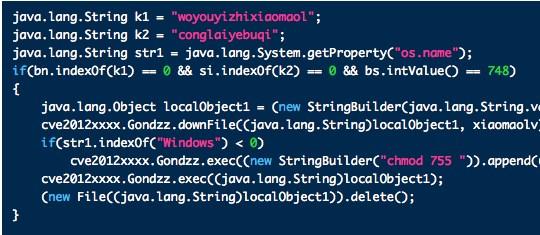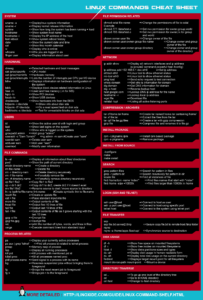What was the Windows verison of chown & chmod? I just moved some screenshots from the admin's 'my pictures' to the all users (shared) folder using the command line. However, they are still set to be only readable by the admin. With the current windows-on-ubuntu setup, you can't use ssh properly, since you can't use chmod command to configure your ssh server keys. This means you can't execute BASH scripts that connect to your servers and automate things, like deploying new code to production or development servers that are hosted on another machine.
chmod is very useful tool to manage file modes like read write execute. One of the most used option for chmod is +x which stands for execution rights. In this tutorial we will look different use cases for user or owner, group and others roles.
We generally need to know given file current user and group. We will use ls command with -al options in order to list this information.
We can use u user before the plus in order to enable user execution right of the given file. In this example we will enable user execution of file app.sh

We can use g group before the plus in order to enable group execution right of the given file. In this examples we will enable group execution of file app.sh
Others is special group which covers all users in a Linux system. We can enable the execution right of the all users in a file with o like below.
In some cases we can see the +x without a definition. This is used for all which is equivalent for user , group and others . Alternative is adding a like below.
OR
Files and directories in Unix may have three types of permissions: read (`r'), write (`w'), and execute (`x'). Each permission may be `on' or `off' for each of three categories of users: the file or directory owner; other people in the same group as the owner; and all others.
Files
To determine the mode (or permission settings) of a particular file, use the command `ls -lg filename'. This command will produce a message similar to the following:
-rwxr-x--x 1 owner group 2300 Jul 14 14:38 filename
The string of 10 characters on the left shows the mode. The initial character ('-' in this case) indicates what type of file it is. A '-' indicates that the file is a plain file. The character 'd' means it is a directory. Characters 2-4 are, respectively, `r', `w', or `x' if the corresponding permission is turned on for the owner or `-' if the permission is turned off. Characters 5-7 similarly show the permissions for the group; characters 8-10 for all others. The second string shows the number of links that exist to the file. The third string identifies the owner of the file and the fourth string tells what group the owner of the file is in.
To change the mode of a file, use the chmod command. The general form is
Chmod U+x Windows
where: X is any combination of the letters `u' (for owner), `g' (for group), `o' (for others), `a' (for all; that is, for `ugo'); @ is either `+' to add permissions, `-' to remove permissions, or `=' to assign permissions absolutely; and Y is any combination of `r', `w', `x'. Following are some examples:
Directories
The permission scheme described above also applies to directories. For a directory, whoever has `read' permission can list files using the ls command (and thus discover what files are there); whoever has `write' permission can create and delete files in that directory; whoever has execute permission can access a file or subdirectory of known name. To find out the mode of a directory:
If no directories are specified, the listing is for all files in the current directory. The output will look something like:
The initial `d' in the 10-character mode string indicates that the file is a directory. The file name `.' always refers to the current directory; the file name `..' always refers to the parent of the current directory. Thus, this output shows the permissions for the current directory and its parent.
More Information
For more information, including octal specification of permissions, refer to the Unix User's Manual pages for chmod(1) and ls(1). To view these online, enter
A variable called `umask' is used as a permission mask for all newly created files and directories. Umask is a 3 digit octal number. The default umask is 022 = 000 010 010 binary. The two one bits prevent 'group' and 'other' write permission. So, a newly created file will have rwx permission for the owner, and rx permission for group and others. A umask of 077 = 000 111 111 would cause new files to have no permissions set for group and others. In order to use a umask other than the default, you should include the line `umask num' (where num is an octal number) in your .cshrc file. For more about umask, enter
Chmod Windows 10
An Example - Fred and Joe Want to Share Files
There may be times that you want to copy a file from someone else's directory. How can you access that directory and copy the file? The following scenario describes the process.


Suppose that user `joe' wants to copy the file `prog.f' from user `fred.' At the Unix prompt, Fred should type
This command changes the mode of Fred's home directory (represented by the ~), giving permission to all users to get to files in that directory. Therefore, Joe can access any file, of which he knows the name, in Fred's home directory. Fred has told Joe that the file he wants is called `prog.f,' so now Joe types
If Joe had an existing file with the name `prog.f,' which he did not want overwritten by Fred's file, he could instead type
Git Chmod X Windows
If Joe receives a message from the system saying that he is denied permission to copy the file, Fred should make the file readable by others, changing its mode by entering
Chmod +x For Windows
If Joe wanted to copy several files from Fred's home directory, for example `prog.a,' `prog.b,' `prog.c,' and to give these files the same names in his own home directory, he would type
The period (.) at the end of the command line specifies that the files are to be copied into Joe's current directory (which in this case is his home directory).
Once Joe has copied the files, Fred will probably want to change the mode of his home directory so that it is no longer accessible to the world at large. To do this, Fred should type
As you can see, a + sign used with `chmod' adds accessibility and a - sign takes it away. It is possible to use these features on directories of all levels and all files within those directories, individually or as a group. For detailed online information about the `chmod' command, enter